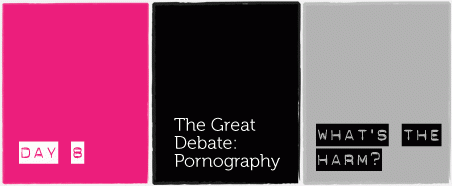
The internet has become an important public space for us to access information, exchange what we know, express our opinions, communicate with each other and more. Especially in contexts where other channels for information are regulated through law, custom or norms, the internet and related communication technologies are valuable platforms for the continued participation and engagement of ordinary people in things and issues that matter to us.
Sexuality in particular, is an area that is subjected to close scrutiny and policing in all parts of the world, in different ways. It is often difficult for women to find safe spaces to find information related to sexual reproductive health or sexual pleasure from the diverse perspective of women and girls, or to engage in open conversations about these matters. This is even more so for women who are from less powerful or visible sections of society, such as migrant, queer or economically disadvantaged women. As such, digital spaces can be a valuable space to access information that is not available elsewhere, or to connect with people and form networks and communities across distances and sometimes, with less risk. These connections and alternative articulations of sexuality have also generated change in terms of discriminatory laws and accompanying cultures.
At the same time, the internet has also enabled the flourishing of pornography. The dominant forms of pornography are often created for the male audience, with disempowering sexualised representations of women. Sometimes, the context in which pornographic content is created can be exploitative and abusive. This is also the basis in which calls have been made to regulate the exchange of information and communication over the internet, and for its censorship.
Women are more often than not, absent in these discussions.
What is the problem with online pornography? How are they harmful to women? Are there any differences between different types of sexually explicit content? Can they be empowering as well as disempowering, and in what ways and contexts? What is the value of online spaces for the realisation of women's sexual rights? How are decision-makers using pornography as a justification to narrow the ability of people to use the internet freely to communicate and exchange? What are the assumptions built into this issue? How can measures be more effective to address the harm faced by women in this issue? How can we engage with the issue of pornography, content regulation and sexual expression in a way the disrupts and challenges sexual violence?
Speak for yourself. Join the great debate.
- Click here to enter the Great Online Pornography Debate.
- Login to join the great debate. This is at the top right corner of the graph.
- You can either create a new account, or use the Take Back The Tech! shared campaign account. Email us and we'll send it to you right away.
- To add your thoughts, click on one of the bubbles - whichever bubble that is relevant to your train of thought. If it's an entirely new thought, click on the main "Online pornography" bubble.
- Click "add element", and type in the title of your argument, opinion or experience.
- Click "add rollover" and type in the details.
- Please feel free to add to the debate in any language you feel comfortable in.
- When you're done, click "finish".
Explore
- Read about the many sides of the issue.
- Click on each bubble to find out more.
- You can also drag the bubbles around to have a better look at the threads of thought, and click on the bubble to expand it.
Build the discussion
- Spread the word by adding the link to today's action onto your email signature, on your blog, or status message
- Tweet about it or send someone an SMS.
- Claim your right to define our space. What you think and have experienced matters. Engage in the debate and shape the kind of internet that we would like to have.
- Log in to post comments
